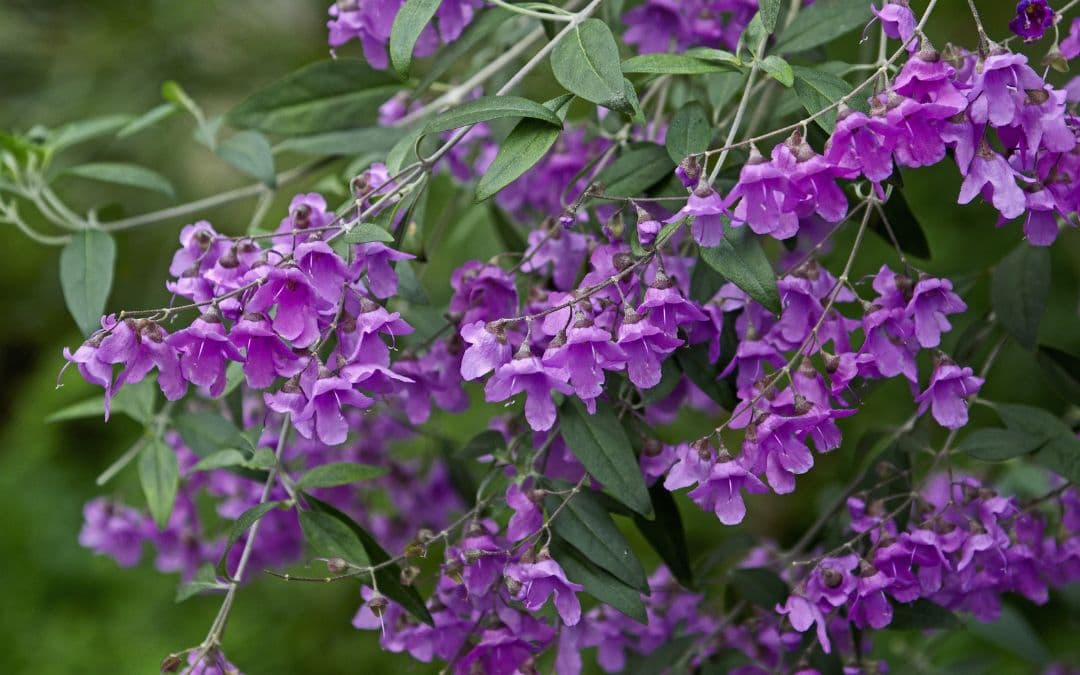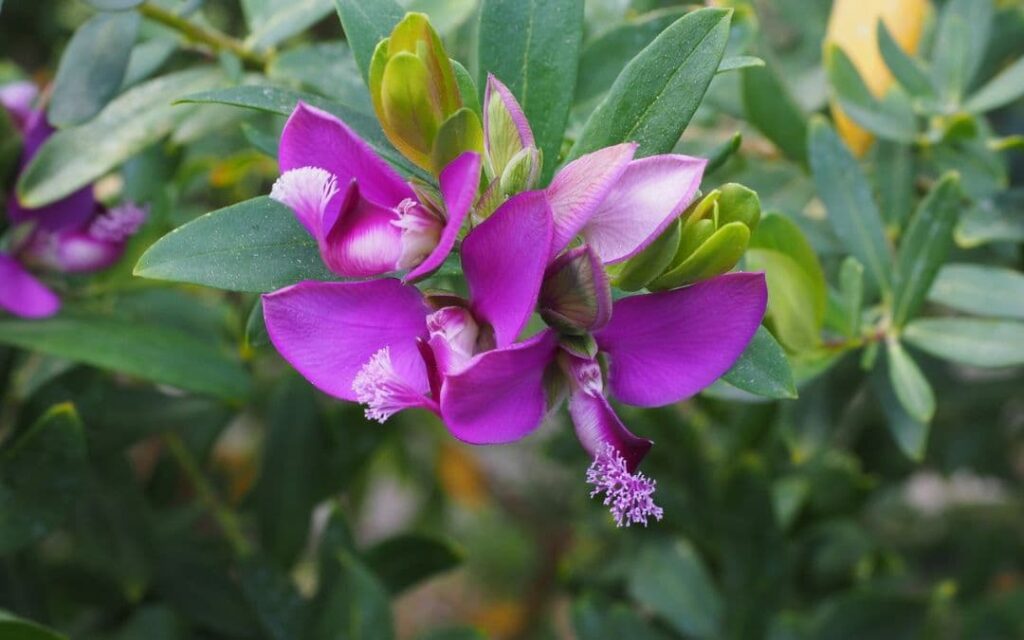Native mint bush: A beautiful native alternative to a polygala

Native mint bush: A beautiful native alternative to a polygala
Polygalas are flowering at the moment. With its purple pea flowers, they are a lovely looking large shrub often known as Sweet Pea Shrub (but not to be confused with annual Sweet Peas), Butterfly Bush or Myrtle-leaf Milkwort. Their aesthetic appeal and long flowering season have made them a popular garden plant.
Unfortunately, polygala spreads aggressively in Victoria making it an invasive species that is very detrimental to bushland and the environment. Its unchecked spread means it can quickly become a weed smothering other species. When that happens it can disrupt the balance of local ecosystems, reducing biodiversity and depriving wildlife of their food sources.

Polygala Flowers
Instead of polygala, why not consider replacing it with a native alternative like one of our gorgeous prostantheras? They are equally (if not more!) gorgeous and a much better choice for our local environment.
A stunning native choice
Prostantheras, commonly known as mint bushes, are real show-stoppers. There are about 100 species and all are only found in Australia.
We have several locally native prostantheras in Melbourne, including a very large one commonly known as the Victorian Christmas Bush (Prostanthera lasianthos va. lasianthos) and a much smaller one, the Balm Mint-bush (Prostanthera melissifolia).
Mint bushes are great garden plants, so have been widely cultivated and are available in indigenous nurseries, independent nurseries and big hardware chains. They can even be hedged (head down to Bulleen Art and Garden for some advice and a great range). They come in different sizes from medium (1.5m) to very large shrubs (10m) and become covered in flowers in spring and early summer. Mint-bush flowers can be white (like the Victorian Christmas Bush), pink or purple. These hardy shrubs grow quickly and have beautiful aromatic and edible foliage.
As well as being known as ‘mint bush’, they can also be called ‘native oregano’ and ‘native thyme’ in bush tucker ranges at nurseries. Mint bushes like full sun or part shade and because they are native, they are well suited to our environment, as they thrive in local soils and require less water than exotic species like polygala. Be careful not to overfertilise (only use compost or a native plant fertiliser) or overwater them, as they don’t like having wet feet and are phosphorus-sensitive like most natives. They will usually visibly droop if they need water.
Enhancing habitat for local wildlife
A major advantage of planting a mint bush is its ability to support local wildlife. Prostantheras provide essential nectar for pollinators, including native bees and butterflies and offer shelter for small animals, birds and other insects.
By swapping out invasive species like polygala for native alternatives such as prostanthera, you’re making a conscious decision to protect your local environment while still enjoying a beautiful and thriving garden. So, the next time you’re looking to plant or replace something in your garden, consider a native flowering mint bush, because it’s a real beauty.
Written by Jen Willis
